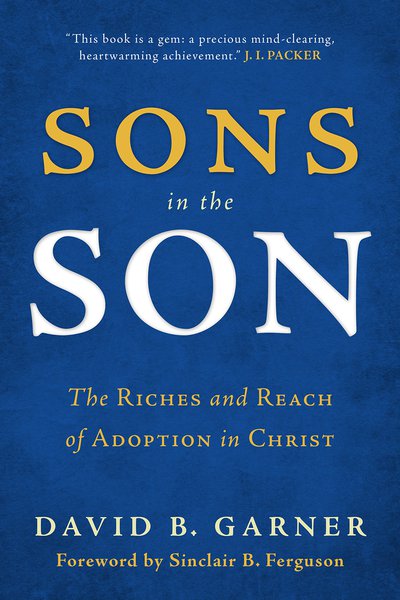
David B. Garner
Reviewed by: James J. Cassidy
Sons in the Son: The Riches and Reach of Adoption in Christ, by David B. Garner. P&R, 2017. Paperback, 400 pages, list price $24.99. Reviewed by OP pastor James J. Cassidy.
If the saving grace of adoption has been marginalized in church doctrine, which is the contention of Professor Garner in this book, then this book seeks to “re-place” (p. 312) adoption, recognizing its proper—central—role in salvation.
In part one, Garner surveys the historical use of the word and idea of adoption from ancient civilization to the New Testament. The second part consists of an exegetical and theological study of the adoption and sonship motifs. Of special interest here is how Christ, by virtue of his resurrection, is adopted by the Father and declared to be Son of God. In part three, Garner deftly navigates the choppy waters of distinguishing and relating how Christ’s eternal sonship (as the second person of the Trinity) relates to his “becoming” sonship in history by his resurrection. He further shows how Christ’s sonship becomes the source from which believers receive their sonship in union with him. Our adoption into the family of God is accomplished and applied to us by Jesus Christ, the resurrected and glorified, adopted Son of God.
Anyone who is familiar with Reformed theology in the tradition of Geerhardus Vos, John Murray, and Richard B. Gaffin, Jr., will be at home with this volume. To use more technical language, Garner stands in this tradition as he brings together the “already” and “not yet” of New Testament eschatology, the historia salutis and ordo salutis, and the disciplines of biblical and systematic theology. The book is full of insights from the best of Reformed theology.
Readers, however, should be aware of two things about the book before diving in. First, the book is a revision of the author’s Ph.D. dissertation. As we might expect from a doctoral dissertation, the book is not written at a popular level. That is a good thing, but the reader should not expect to find ready-to-go Sunday school material.
Second, I have some reservations about Garner’s proposed reordering of the ordo salutis. If I understand his position correctly, he proposes that adoption is the primary benefit of our union with Christ, with justification and sanctification being subsidiary benefits of adoption (see fig. 10.5 on p. 308). So central is adoption that he can say, “The gospel is filiocentric; the gospel is adoption” (p. 306). Earlier in the book, he is critical of theologies that have a “forensic fixation,” wanting to prioritize justification over other saving benefits (pp. 224–27). That is a good criticism, but has he replaced one fixation (forensic) with another (filial)?
And is it proper to say that adoption is a benefit that yields other benefits? Our confessional standards seem to teach that justification and sanctification flow directly from our union with Christ, unmediated by other benefits of redemption (e.g., WSC 30 and 32; WLC 69). The Catechisms teach that justification, adoption, and sanctification are coequal and coeval benefits of our union with Christ. But Garner seems to raise the benefit of adoption to such a place that it serves the same ordo function as union. While he does make a formal distinction between union and adoption, it is hard to see how any actual function is left for union, given adoption’s comprehensive role.
Those concerns aside, Garner’s book is a most welcomed and needed addition to the literature available on an important topic.
November 17, 2024
November 10, 2024
Taming the Fingers: Heavenly Wisdom for Social Media
November 03, 2024
Unfolding Redemption: Exploring the History and Order of Salvation
October 27, 2024
You Are Still a Mother: Hope for Women Grieving a Stillbirth or Miscarriage
October 06, 2024
September 29, 2024
September 22, 2024
Christianity and New Religious Movements: An Introduction to the World’s Newest Faiths
© 2024 The Orthodox Presbyterian Church